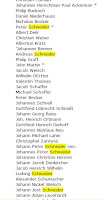Today, Fold3.com (formerly Footnote.com)released a press release about its Civil War records.
Original Documents Found on Footnote.com Provide Unique Perspective on the Civil War
Lindon, UT – May 31, 2007 – Throughout history, people have a tendency to remember the major events and famous people that shaped our country. However, our nation’s heritage is rich with stories of the common man. It is within these stories that we find valuable and unique insights into the history of the United States.
Now available on Fold3 (formerly Footnote.com) are details about the brave men and women involved in the Civil War. Fold3 brings to life these stories within millions of original Civil War Records most of which have never been available before on the internet.
Through its partnership with the National Archives Footnote.com has been able to digitize and index records including Confederate Soldiers Service Records, the Southern Claims Commission Records, and the Lincoln Assassination Trial Papers.
Each of these titles features information and details that few have had the opportunity to view.
However, finding these valuable records is only the first step to discovering new insights. “We are providing the tools and content that will eventually create the largest Civil War community on the web.” says Russell Wilding, CEO of Fold3 (formerly Footnote.com) are encouraged to highlight and discuss what they’ve found. Members are also able to upload their own photos and documents and create their own “footnotes” by annotating and commenting on the records.
Fold3 brings to life these stories within millions of original Civil War Records to access free samples of these original documents as well as see what Footnote members have contributed.
Fold3 (formerly Footnote.com) does indeed have unique Civil War items especially from the Southern states. It also has the Civil War pension index which covers the Union states.
But what is the most unique at Footnote.com is the story pages, user-contributed "footnotes" to the records. These story pages contain photos, explanations, further history, photos, biographies, record annotations and family research.
I think that as more people contribute to the story pages, they are going to make Fold3 (formerly a very unique and genuinely useful resource for family research. See the free story pages at Story Pages






